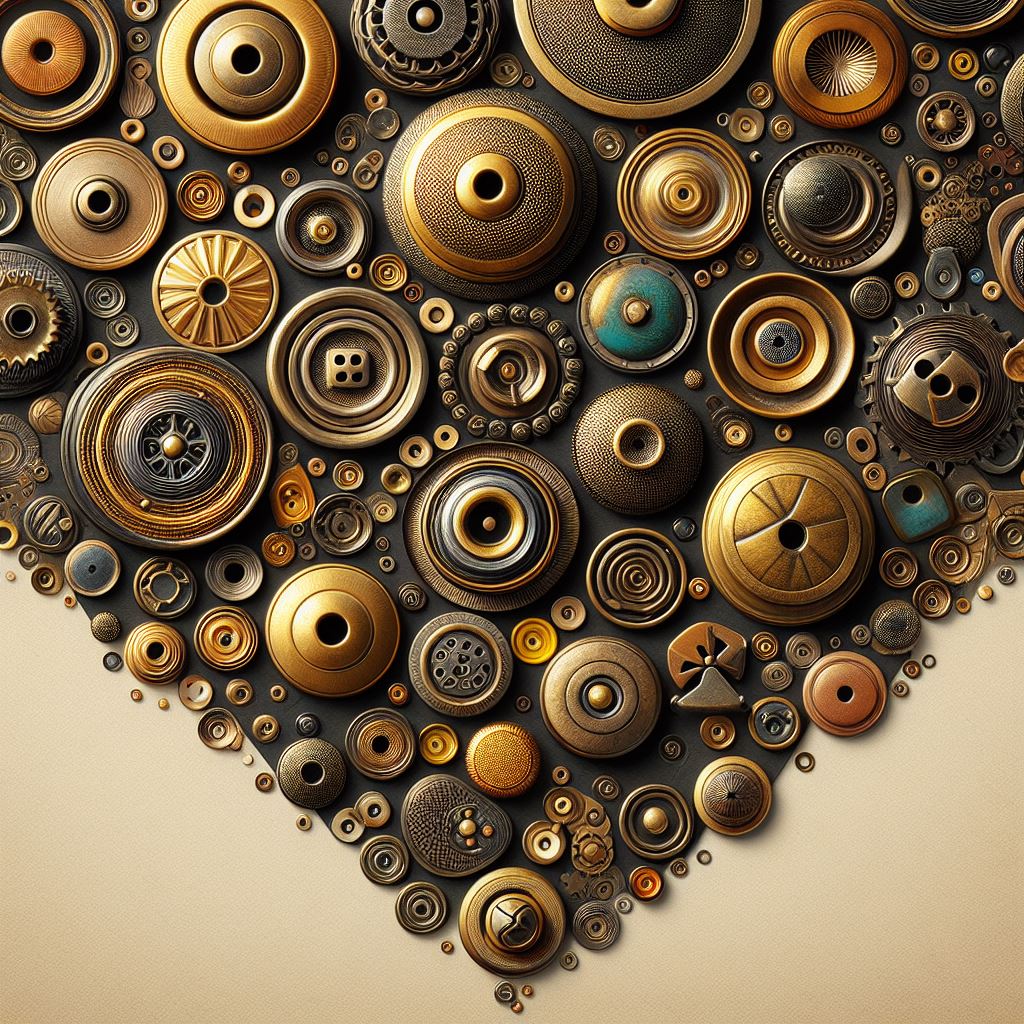Snap buttons, also known as press studs or snap fasteners, are a versatile and convenient fastening solution used in a wide range of applications, from clothing to accessories and beyond. These ingenious fasteners consist of several key components that work together to provide a secure and reliable closure. Understanding the different parts and types of snap buttons can help in selecting the right option for various needs and preferences. Let’s delve into the components and varieties of snap buttons:
Components of Snap Buttons:
- Socket: The socket is the female component of the snap button system. It features a concave opening that receives the stud when pressed together. Typically attached to one side of the fabric, the socket securely holds the stud in place to create a fastened closure. Sockets come in various sizes and materials, including metal and plastic, to accommodate different applications.
- Stud: The stud, or male component, is the counterpart to the socket. It consists of a protruding head that fits into the socket when pressed together, creating a secure fastening. The stud is usually attached to the opposite side of the fabric from the socket. Like sockets, studs are available in metal or plastic and come in various sizes and shapes.
- Cap: The cap is a decorative component that covers the exposed stud when the snap button is fastened. It adds a finished look to the snap button and helps protect the fabric from abrasion or damage caused by the stud. Caps come in a wide range of styles, designs, and materials, including metal, plastic, and fabric-covered options, allowing for customization to match the garment or accessory’s aesthetic.
- Post: The post, also known as the rivet or prong, is the connecting element that secures the socket and stud to the fabric. It consists of a cylindrical shaft with two prongs that pierce through the fabric and hold the socket and stud in place. The post is typically inserted through pre-punched holes in the fabric and then folded or crimped to secure it in position. Posts come in various lengths to accommodate different fabric thicknesses.
Types of Snap Buttons:
- Spring Snap Buttons: These snap buttons feature a spring mechanism that allows for easy opening and closing with a simple push or pull. They are commonly used in clothing, bags, and accessories where quick fastening and release are desired.
- Ring Snap Buttons: Ring snap buttons feature a ring-shaped cap instead of a flat cap, providing a unique aesthetic and additional reinforcement to the fastening. They are often used in heavy-duty applications such as workwear, outerwear, and bags.
- Pearl Snap Buttons: Pearl snap buttons feature a decorative cap resembling a pearl or other gemstone. They add a touch of elegance to garments and accessories and are popular in western wear, denim clothing, and vintage-inspired designs.
- Hidden Snap Buttons: Hidden snap buttons, also known as invisible snap buttons, feature a design where the socket and stud components are concealed within the fabric layers when fastened. This creates a seamless and discreet closure, commonly used in formal wear, dresses, and tailored garments.
- Magnetic Snap Buttons: Magnetic snap buttons utilize magnets to create a secure closure, making them ideal for bags, purses, and accessories. They offer a quick and convenient fastening solution without the need for manual pressing or snapping.
In conclusion, snap buttons are versatile fasteners that provide a convenient and reliable closure in various applications. By understanding the components and types of snap buttons available, designers and manufacturers can choose the right option to suit their specific needs, whether for clothing, accessories, or other creative projects. With their ease of use, durability, and aesthetic versatility, snap buttons continue to be a popular choice in the world of fastening solutions.
